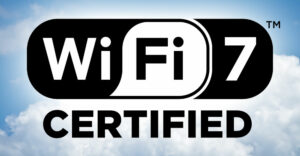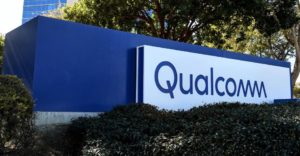
I’m getting ready to travel to New York for the Windows 7 launch and what may be my last plane trip ever if this post is correct. So I figured it was time to think about Windows.
Microsoft and Windows go back to the very beginning of the PC — when people couldn’t afford them, when networks were defined by terminal emulators and floppy disks, and when many of the Google pioneers were in diapers. Looking back at what Windows initially did and considering what Windows 7 is capable of, you can certainly say a lot has changed. Looking back at Windows Vista, you can add “thank god” to that.
Companies from Microsoft to Apple are largely based on the world that was, while companies like Google and Facebook are based on the world that is, and OnLive on the world that will be. Windows 7 comes at an important juncture, but is the whole concept of the PC soon to be obsolete? I figure that is worth talking about during Windows 7 launch week.
I’ll close with my product of the week — the PC I think is the best example of what Windows 7 promises. As I write this intro, I haven’t yet decided which one I’ll pick.
OnLive and Back to the Future
I spent most of one morning last week getting a deep dive at OnLive, and much of what I learned I can’t yet share. What I can share is that this service, initially designed for gaming, embodies concepts that come from a variety of industries and could make thedecades-old vision of Scott McNealy and Larry Ellison — a return to a simpler, more mainframe-like world — a reality.
It does this by doing what we did in telecom nearly four decades ago, but instead of optimizing on the cost of a telecommunications connection (called “least cost routing”), the technology focuses on optimizing for latency. Using unique leased servers, it also uses a more current cloud-based model to scale with demand and provide a high-end PC experience without needing expensive PC hardware.
I’m satisfied (along with a number of recent large investors) that this thing will work, and that once it does — and as wireless network bandwidth becomes more available — the model can be moved to things other than games.
The short-term limitation is based on the reality that we’ve moved to notebooks and that wired bandwidth simply won’t be good enough until WiMax and LTE roll out broadly (expected by 2015). But this is only part of a future solution.
Adding GPU Computing and Natal
In a previous column about GPU computing, I said it was going to change the future. This is something that is actually core to Windows 7 with DirectCompute. However, a bigger impact on the future will result from combining this with the back-end capability of a cloud-based system. Folks won’t need to buy the hardware they need to do amazing things — they’ll just rent it.
One of the biggest areas this advancement could impact is the blending of real and virtual worlds. Microsoft showcased a product code-named “Project Natal,” which effectively owned the excitement of the last E3 gaming conference. This could add the physical interface, but what about blending the real world with the virtual visibly?
Adding a Virtual Reality Bridge
I’ve recently run into a product called the “Polycom CX5000 Unified Communication Station,” which blends Live Meeting (it actually came out of the Microsoft lab) with cameras and a speakerphone to create a better meeting experience. This product visually captures a conference room with its 360-degree cameras.
With the proper back end, the CX5000 could blend the real with the virtual to create a communications experience that only exists in science fiction today. You take this idea forward and combine it with an OnLive back end, a Natal user interface, and a real-time GPU-driven photorealistic virtual world, and you have the potential for a holodeck-like user interface and a revolutionary new virtual reality platform.
The Future
It is likely the next big change won’t be driven by any one product, but by a blend of things coming together to force a major change in the way we do things.
Fortunately, I don’t see this happening until 2020 — but the cloud is coming, and it likely will create some rather interesting, and dramatically different, personal computing products.
Windows 7: A Look Into the Future or a Last Gasp from the Past?
Let’s be clear — like Walt Mossberg, I think Windows 7 is what Windows always should have been. It is relatively fast, very reliable, reasonably easy to use, and easy on the eyes.
I may wonder which version is really the best version and think that Starter Edition may be dramatically undervalued, but this is the best work Microsoft has probably ever done.
I doubt corporations will adopt this before the arrival of Office 2010 — which has also been getting some nice accolades — as they don’t like to update Office and Windows on separate cycles. However, for individuals, the improvements are pronounced, and when one of the leading Apple advocates thinks it is good enough to cause Apple problems, you know it’s something special.
In the past, I’ve pointed out that for once, Microsoft is willing to staff and fund marketing and is even trying something unique in terms of a TV show that’s based on product placement. I’d typically say it’s executing at Apple levels, but with the problems that have plagued Leopard (Leoptard) and Snow Leopard (shouldn’t that be Snow Leoptard?) it’s arguable that in many ways, Microsoft is executing better than Apple is — at least with Windows 7.
Some Apple users are already switching — though the Mac faithful will likely blast those who go public,as Joe Wilcox did.
However, if the world is moving to a new model — with hosted services and computers that look more like an iPhone, BlackBerry or set-top box — is Windows 7 the beginning of that future or the best of the past?
I have to argue the latter. Since we live in the present, not the future, and we tend to be rather resistant to changes, particularly big ones, I’m convinced Windows 7 is best for now (with the future I’m imagining at least five to 10 years off).
With DirectCompute, Windows Live additions, and future Web enhancements, Windows 7, 8, and 9 could be transition products. We often need transitions to cross from the present to the future, and Windows 7 could be the first small step.
Product of the Week: Best Windows 7 Showcase Product (So Far)

Choosing this was much harder than I thought it would be, because Windows 7 has several critical showcase features. It is optimized for mobile, it has multitouch, and its new DirectCompute technology uses the GPU to substantially increase the available performance for some things.
This means the best product must be a laptop, must have a good (ATI or Nvidia) GPU, and it must have multitouch. It seems there are a lot of new laptops with GPUs and with touchscreens, but not many have been announced — it also has to be announced — that have both.
What I came up with is the Acer Aspire AS5738PG-6306 multitouch-screen notebook. (Acer just passed Dell for the No. 2 worldwide PC sales spot, but man do they need someone to help them with naming.)
It has a 15.6-HD CineCrystal multitouch screen, Intel Core 2 T6600 processor, ATI Radeon HD 4570 graphics card, 4-GB DDR2, 320-GB SATA hard drive, 8x super drive, numerical keypad, Dolby sound, HDMI, and an $800 price tag. I saw only two negative review comments, and they were a) that people would get so excited about the touch stuff, they had a tendency to push the screen down flat (suggesting a stronger hinge for future products, I think) and b) fingerprints on the screen (needs a screen wipe option).
There are a lot of notebooks that will run Windows 7 fine. Basically, all of them will — even Apple’s, with Boot Camp. However, I found just one announced notebook that includes all of the critical features needed to really showcase the key components of Windows 7, and it is this new Acer.
I find it incredibly amazing that only one vendor got the mix right — and only on one product at that. To be fair, more are likely to announce on the 22nd. Until then, the Acer Aspire AS5738PG-6306 is the clear choice to showcase Windows 7, and that’s why it’s my product of the week.
Rob Enderle is a TechNewsWorld columnist and the principal analyst for the Enderle Group, a consultancy that focuses on personal technology products and trends.























































I’m sorry Mr. Enderle, but I gotta call Bs. Why? Two words-Bandwidth caps. You might be one of the lucky ones that are living in a major city with multiple ISPs to choose from, but as someone who has crossed this great country I can tell you that most places just aren’t like that.
Most places if you are LUCKY is a duopoly, many are a monopoly, and in both situations you have large corps that have NO REASON to bother with upgrades to their backbone, and they certainly aren’t gonna give a fudge if OnLive works are not. In my own situation I’m looking at a 36Gb cap(cable) or 50Gb(very slow DSL) and $1.50 per Gb going over, and I AM FAR from alone.
So in short Mr. Enderle, while services like OnLive might work in limited markets like NY and L.A., the rest of us need PCs because it is far cheaper to simply walk into a store and by software for hardware we have at home than it is paying for the bandwidth something like OnLive would chew through.
And gaming PCs have never been cheaper, in my own case I paid $650 before rebates for 8Gb of RAM, dual core AMD, 1Tb of HDD, and a 4650 ATI with 1Gb on the card. Add in $50 I paid for a copy of Win7 HP and you have a gaming PC that will keep me quite happy for awhile, and if I ever need more power a simple $80 GPU upgrade will pop me right back into the game.
So while I’m glad you live in a place where "cloud computing" is actually viable, short of nationalizing the last mile for most of us it will remain nothing but smoke.